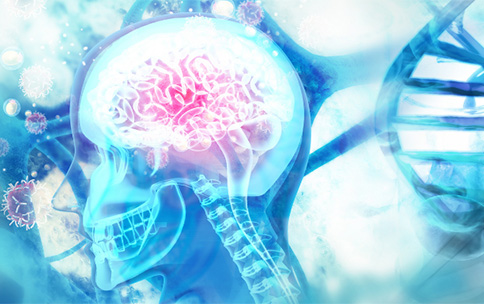
The goal of the NIH Common Fund’s 4D Nucleome (4DN) program is to study the three-dimensional organization of the cell’s nucleus over time. Inside the nucleus, several feet of DNA are packed with protein into structures called chromatin. Chromatin can change shape at specific locations to affect how the genes in those locations are regulated. 4DN researchers aim to advance the scientific community’s understanding of how different types of chromatin organization influence gene regulation and cell function. It is currently difficult to study how chromatin organization differs among cell types, so cell-type specific changes to chromatin structure in disease often go unnoticed.
To address this issue, a 4DN research team led by Dr. Ana Pombo developed immunoGAM (immuno Genome Architecture Mapping). This is an extension of their previously established GAM technique, which uses extremely thin, frozen sections of the nucleus precisely cut at various angles to determine which chromatin locations are near each other in space. ImmunoGAM expands the GAM technique to analyze specific cell types within a tissue, without the need to isolate these cells from their native tissue environment and using samples containing a small overall number of cells. Using immunoGAM, the research team found that specialized chromatin structures exist within mouse brain cells, and that these structures reflect specialized functions of each cell type.
One interesting discovery was related to DNA segments that encode very long genes. These genes are often involved in specialized cell functions. Although typically DNA is tightly condensed inside the nucleus, very long genes were observed to undergo ‘domain melting,’ an event where the DNA became less condensed, only in specific cell types. These ‘melted’ genes were also found to be highly active in a cell-type specific fashion. For example, Nrxn3 is a very long gene, and in dopaminergic neurons, a special type of brain cell, it was found to ‘melt’ and be active. However, in other brain cell types, the Nrxn3 gene was condensed and not active. Knowing how the gene is regulated in different cell types is particularly important, because the gene is dysregulated in neurological conditions like autism spectrum disorder and schizophrenia. These findings show the importance of examining cell-type specific chromatin organization to better understand gene regulation, cell function, and neurological disease.
References
- Cell-type specialization is encoded by specific chromatin topologies. Winick-Ng W, Kukalev A, Harabula I, Zea-Redondo L, Szabó D, Meijer M, Serebreni L, Zhang Y, Bianco S, Chiariello AM, Irastorza-Azcarate I, Thieme CJ, Sparks TM, Carvalho S, Fiorillo L, Musella F, Irani E, Triglia ET, Kolodziejczyk AA, Abentung A, Apostolova G, Paul EJ, Franke V, Kempfer R, Akalin A, Teichmann SA, Dechant G, Ungless MA, Nicodemi M, Welch L, Castelo-Branco G, Pombo A. Nature, 2021 Nov;599(7886):684-691. doi: 10.1038/s41586-021-04081-2. Epub 2021 Nov 17.
Watch a 4DN Scientific Webinar Series presentation by author Dr. Warren Winick-Ng about this work on YouTube.


